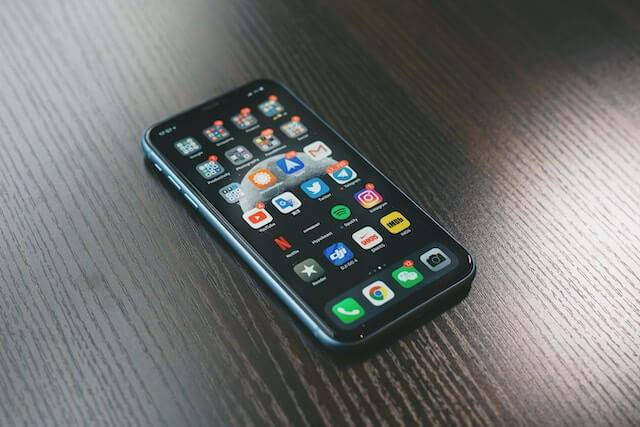People who have been using iOS devices for a while now will know without a doubt that these mobile devices are some of the best and most sophisticated mobile gadgets in the world. Every single thing from the design and build of the gadgets to the operating system and handling of the phones makes them one of the most sought-after and used gadgets in the world.
Arguably the best thing about these devices though is the fact that they are incredibly user-friendly. This means that, for the most part, you could pick these gadgets up for the first time and still not go through any significant amount of trouble accessing many of the features and functions that you need.
All of that being said, this doesn’t necessarily translate to mean that everything you do on these devices will always be straightforward. A classic example of this fact presents itself clearly when it comes to learning how to turn off shortcut notifications iOS 16.
For the most part, virtually anything you want to do on Apple devices generally comes without much (if any) stress and effort. However, when you do have to go the extra mile with these things, you need to be sure you’re absolutely prepared to go all the way!
Of course, it’s not too hard to see why things like these would be much easier said than done.
It is for this reason that we have gone the extra mile to provide iOS users with all the information that they could possibly need when it comes to mastering the intricacies and complexities of turning off shortcut notifications on their devices.
Along those lines, we’ll be going over everything from why you would want to perform this exercise in the first place to the most efficient ways that you can go about this affair this year.
Without further ado, let’s get started on all that you need to know to configure your iOS 16 however you like!
A Basic Guide to Shortcut Notifications on iOS 16
As you are likely already aware by now, there are several features and functionalities that help iOS devices stand out. One such element is the high degree of personal automation that users can explore and access at will on supported devices.
Thanks in large part to the services of this feature, you can do everything from changing the different sounds on your device to even customizing your application icons in a matter of mere seconds. As you can probably very easily imagine, this hub of automation can do so much to enhance your user experience on iOS devices.
There’s just one “small” tradeoff to leveraging the various resources that are put at your disposal here. Every time that you use one of these automation features, you get a pop-up message. Now, this might seem like a trivial matter – and it is, at least, at the very beginning.
However, we’ll be going into further detail on why you might be better served learning how to turn off shortcut notifications iOS 16. That way, you’re likely to have a much better idea of why it might be imperative that you have a good handle on how to efficiently manage your shortcut notifications.
Top Reasons to Manage Your Shortcut Notifications on iOS 16
For those who have been receiving shortcut notifications on iOS for a long time, the reasons why they might be better served gaining complete control over this feature don’t bear going into. However, if you only just started accessing this resource, you might not as yet be clear on why such a move is both necessary and important.
Now, it is only to be expected that not knowing why you would want to control your notifications on iOS 16 won’t make the need to learn this feature essential. With this in mind, we’ll be going over some of the major reasons why you would want to know how to effectively control your mobile devices’ automation pop-up notifications.
These include:
It Enhances User Convenience
At the top of the list of reasons why you should know how to control your shortcut notifications is that this goes a long way in making your iPhone or iPad more convenient to use. Now, you might be thinking that it isn’t a big deal to receive a pop-up notification every now and then.
However, what no one ever accurately accounts for is the sheer volume of notifications that can quickly build up over time. Now, not only is seeing these unnecessary notifications likely to quickly become annoying but there is also the real possibility that these incessant notifications can make it easier for you to miss more important updates.
As such, learning how to turn off shortcut notifications iOS 16 can ease much of the stress that’s likely to come with this exercise.
It Promotes Your Privacy
When you don’t have your notifications firmly under control, there’s the possibility that it could compromise your privacy. This is because these notifications crop up every time you access the customizations that you’ve created. The result of this is that anyone can almost at any point figure out what automation you have employed on your device and, through this, learn other things about your device.
Now, this isn’t necessarily the end of the world. That being said, it’s always better to be safe than to be sorry. With this in mind, it certainly isn’t a bad idea to keep your notifications hidden.
It Improves the Aesthetic Experience of Your Device
Now, let’s imagine that you’ve used the feature in question to customize your apps. Your device looks every bit as beautiful as you imagined it would be. However, every time you use these apps, you get a notification. At first, this is certain not to diminish the appeal of your custom apps in any way.
But, over time, there’s a pretty good chance that this will change. And, when it does, your aesthetically pleasing display won’t feel as good as it used to. To prevent this from happening, you need to know how to shut off the shortcut notifications on your iOS 16.
Having touched on some of the top motivations for iOS 16 users learning to control their shortcut notifications, let’s get into all that you need to know to perform this particular feat with a minimum amount of fuss.
How to Turn Off Notifications iOS 16 – All You Need to Know
For the record, you should know that the biggest reason why you need to follow a complicated process when learning how to turn off notifications iOS 16 is because, as of the time of writing, Apple is yet to provide an in-built feature to cater to this need for users.
As such, your only recourse is to employ various workarounds to get this done. We’ll be talking about some of the most common methods for managing your notifications on iOS today.
These include:
Method One – Disable the “Notify When Run” Feature
While it’s true that learning how to disable shortcuts on your device can be a somewhat harrowing process, there’s a way that you can extensively simplify things for yourself. You can do this by simply taking advantage of the “Notify When Run” feature.
Because most of the apps that trigger these notifications have banner notification settings, all you have to do is disable “Notify When Run” and be on your way!
You can do this by accessing the shortcut app, going to “Automation”, clicking on the app that keeps giving you so many notifications, and toggle the “Ask Before Running” feature off. Now, toggle the “Notify When Run” off as well.
Click on “Done” and you’re through!
Method Two – Use Your Shortcut Notifications
To use this approach, you have to make your way to the “Settings” app on your device. From there, find the “Screen Time” function. Now, keeping in mind that you would need to turn on your screen time, select “See All Activity”.
At the bottom of the listings in “Notifications” function, you should find the shortcut apps. Find the “Shortcuts” function and turn the toggle of the “Allow Notifications” feature to off.
With that, you should stop getting those pesky notifications!
Method Three – Create New Automation
You can do this by going to “Shortcuts”, accessing “Automation” and selecting the “+” icon. Follow that up by tapping the “Create Personal Automation” option. Find the app giving the notifications you don’t want and click on it.
Now, select the “Is Opened” option and, after that, “Choose”. Follow this by clicking on “Next” and then “Add Action”. Now, use your search bar to find the “Stop This Shortcut” option. Click on it and select “Next”.
Find the “Ask Before Running” option and toggle it off. Select “Done” and you’re all set!
Bottom Line
And that’s all there is to learning how to turn off shortcut notifications iOS 16. Sure, this isn’t exactly the easiest thing to do. However, following this process might be well worth it as it assures you complete control over notifications you don’t need.
See more ways to use iOS devices here.

Kenny Trinh is a seasoned expert in the field of laptops and technology, boasting an extensive background enriched by years of hands-on experience and in-depth research. With a keen eye for innovation and a passion for staying ahead of the technological curve, Kenny has established himself as a trusted voice in the tech community. Holding a prestigious degree in Computer Science, he combines his academic insights with practical expertise to deliver valuable insights and recommendations to his readers and followers. Through his work, Kenny aims to demystify complex tech concepts, empowering individuals to make informed decisions and optimize their digital experiences.
